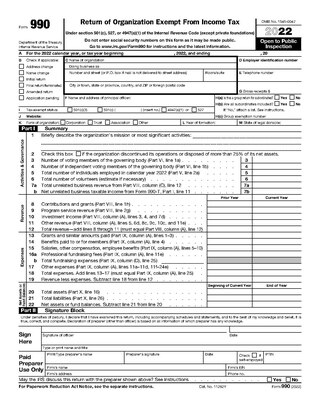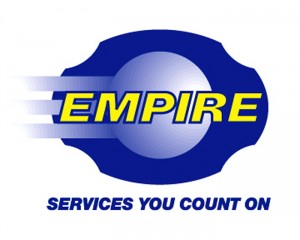Related Research Articles

Energy conservation is the effort to reduce wasteful energy consumption by using fewer energy services. This can be done by using energy more effectively or changing one's behavior to use less service. Energy conservation can be achieved through efficient energy use, which has some advantages, including a reduction in greenhouse gas emissions and a smaller carbon footprint, as well as cost, water, and energy savings.

The National Energy Technology Laboratory (NETL) is a U.S national laboratory under the Department of Energy Office of Fossil Energy. NETL focuses on applied research for the clean production and use of domestic energy resources. It performs research and development on the supply, efficiency, and environmental constraints of producing and using fossil energy resources while maintaining affordability.

The Energy Policy Act of 2005 is a federal law signed by President George W. Bush on August 8, 2005, at Sandia National Laboratories in Albuquerque, New Mexico. The act, described by proponents as an attempt to combat growing energy problems, changed US energy policy by providing tax incentives and loan guarantees for energy production of various types. The most consequential aspect of the law was to greatly increase ethanol production to be blended with gasoline. The law also repealed the Public Utility Holding Company Act of 1935, effective February 2006.

The energy policy of the United States is determined by federal, state, and local entities. It addresses issues of energy production, distribution, consumption, and modes of use, such as building codes, mileage standards, and commuting policies. Energy policy may be addressed via legislation, regulation, court decisions, public participation, and other techniques.

The Energy Independence and Security Act of 2007, originally named the Clean Energy Act of 2007, is an Act of Congress concerning the energy policy of the United States. As part of the Democratic Party's 100-Hour Plan during the 110th Congress, it was introduced in the United States House of Representatives by Representative Nick Rahall of West Virginia, along with 198 cosponsors. Even though Rahall was 1 of only 4 Democrats to oppose the final bill, it passed in the House without amendment in January 2007. When the Act was introduced in the Senate in June 2007, it was combined with Senate Bill S. 1419: Renewable Fuels, Consumer Protection, and Energy Efficiency Act of 2007. This amended version passed the Senate on June 21, 2007. After further amendments and negotiation between the House and Senate, a revised bill passed both houses on December 18, 2007 and President Bush, a Republican, signed it into law on December 19, 2007, in response to his "Twenty in Ten" challenge to reduce gasoline consumption by 20% in 10 years.

The United States produced 5.2 billion metric tons of carbon dioxide equivalent greenhouse gas (GHG) emissions in 2020, the second largest in the world after greenhouse gas emissions by China and among the countries with the highest greenhouse gas emissions per person. In 2019 China is estimated to have emitted 27% of world GHG, followed by the United States with 11%, then India with 6.6%. In total the United States has emitted a quarter of world GHG, more than any other country. Annual emissions are over 15 tons per person and, amongst the top eight emitters, is the highest country by greenhouse gas emissions per person. However, the IEA estimates that the richest decile in the US emits over 55 tonnes of CO2 per capita each year. Because coal-fired power stations are gradually shutting down, in the 2010s emissions from electricity generation fell to second place behind transportation which is now the largest single source. In 2020, 27% of the GHG emissions of the United States were from transportation, 25% from electricity, 24% from industry, 13% from commercial and residential buildings and 11% from agriculture. In 2021, the electric power sector was the second largest source of U.S. greenhouse gas emissions, accounting for 25% of the U.S. total. These greenhouse gas emissions are contributing to climate change in the United States, as well as worldwide.

Form 990 is a United States Internal Revenue Service (IRS) form that provides the public with information about a nonprofit organization. It is also used by government agencies to prevent organizations from abusing their tax-exempt status. Some nonprofits, such as hospitals and other healthcare organizations, have more comprehensive reporting requirements.

WaterSense is a program sponsored by the U.S. Environmental Protection Agency (EPA), designed to encourage water efficiency in the United States through the use of a special label on consumer products. The goal of this program is to protect the future of the U.S. water supply. WaterSense maintains partnerships with key utility, manufacturer and retail partners across the United States. WaterSense is voluntary, rather than a regulatory program. The EPA develops specifications for water-efficient products – low-flow fixtures – through a public process. If a manufacturer makes a product that meets those specifications, the product is eligible for third-party testing to ensure the stated efficiency and performance criteria have been met. If the product passes the test, the manufacturer is rewarded with the right to put the WaterSense label on that product.

The American Gas Association (AGA) is an American trade organization founded in 1918 representing that represents and advocates on behalf of local energy companies that deliver natural gas throughout the United States.

The United States Department of Energy's State Energy Program (SEP) provides grants to states and directs funding to state energy offices from technology programs in Office of Energy Efficiency and Renewable Energy. States use grants to address their energy priorities and program funding to adopt emerging renewable energy and energy efficiency technologies. Started in 2010, the program "is the only program administered by the U.S. Department of Energy (DOE) that provides cost-shared resources directly to the states for allocation by the governor-designated State Energy Office for use in energy efficiency and clean energy innovation, development, and demonstration activities.”
The American Council for an Energy-Efficient Economy (ACEEE) is a nonprofit, 501(c)(3) organization. Founded in 1980, ACEEE's mission is to act as a catalyst to advance energy efficiency policies, programs, technologies, investments, and behaviors in order to help achieve greater economic prosperity, and environmental protection.

The energy policy of Malaysia is determined by the Malaysian Government, which address issues of energy production, distribution, and consumption. The Department of Electricity and Gas Supply acts as the regulator while other players in the energy sector include energy supply and service companies, research and development institutions and consumers. Government-linked companies Petronas and Tenaga Nasional Berhad are major players in Malaysia's energy sector.

The United States is the second-largest single consumer of energy in the world. The U.S. Department of Energy categorizes national energy use in four broad sectors: transportation, residential, commercial, and industrial. Energy usage in transportation and residential sectors is largely controlled by individual domestic consumers. Commercial and industrial energy expenditures are determined by businesses entities and other facility managers. National energy policy has a significant effect on energy usage across all four sectors.

The Empire District Electric Company is an investor-owned utility providing electric, natural gas, and water service with approximately 215,000 customers in Missouri, Kansas, Oklahoma, and Arkansas. A subsidiary of the company also provides fiber optic services.
Energy Trust of Oregon is an independent nonprofit organization based in Portland, Oregon, United States. Energy Trust offers services, cash incentives, and other stuff to customers of Portland General Electric, Pacific Power, NW Natural, Cascade Natural Gas, and Avista in Oregon and customers of NW Natural in Washington.
Conservation Services Group (CSG) is a nonprofit energy efficiency and renewable energy company that has provided program design and management services to energy efficiency program sponsors and energy professionals in the United States since 1984. CSG was bought by CLEAResult in July 2015.
The United States state of Arkansas is a significant producer of natural gas and a minor producer of petroleum.

Home energy upgrades from public utilities are added home energy efficiency and renewable energy features planned or installed by public utilities. Help from a public utility can make it easier for a homeowner to select, install or operate climate-friendly components. The utility might assist with coordinated use of utility-supplied energy, building features, financing, operating options and neighborhood supplied energy.
References
- ↑ "Member Directory". CEE. Retrieved 4 February 2016.
- ↑ "IRS Form 990, Consortium for Energy Efficiency, 2013" (PDF). Guidestar.org. Retrieved 4 February 2016.
- ↑ McLean-Conner, Penni (2009). Energy Efficiency: Principles and Practices. Tulsa, Oklahoma: PennWell. p. 142. ISBN 978-1593701789.
- ↑ Walton, Robert (9 June 2015). "Demand management spending stalls". Utility Dive. Retrieved 4 February 2016.
- ↑ Scott, Leelon (9 September 2012). "Capturing Energy in Wastewater Treatment Plants". WaterWorld. Retrieved 4 February 2016.
- ↑ "CEE Program Resources". www.cee1.org.
- ↑ "Frequently Asked Questions". www.cee1.org.
- ↑ "26 U.S. Code § 25C - Nonbusiness energy property".
- ↑ "Tax credits for energy-efficient upgrades to expire". Consumer Reports. Retrieved 4 February 2016.
- ↑ "Household ENERGY STAR Awareness Surveys". CEE. Archived from the original on 2016-02-04. Retrieved 2016-02-04.
- ↑ "IRS Form 990, Consortium for Energy Efficiency, 2013" (PDF). Guidestar.org. Retrieved 4 February 2016.
- ↑ McLean-Conner, Penni (2009). Energy Efficiency: Principles and Practices. Tulsa, Oklahoma: PennWell. p. 142. ISBN 978-1593701789.
- ↑ "2014 CEE Members". Archived from the original on 4 February 2016. Retrieved 4 February 2016.
- ↑ Wilson, John D. "Ridiculous rate rhetoric". CleanEnergy.org. Southern Alliance for Clean Energy. Retrieved 4 February 2016.
- ↑ Sullivan, Dylan. "Utility investment in energy efficiency increases, but we need more". GreenBiz.com. Retrieved 4 February 2016.